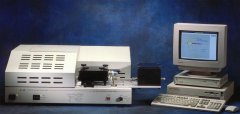Jun 11 2009
Exeter Analytical Inc. (Chelmsford, MA) has published an application note describing direct determination of total Carbon, Hydrogen and Nitrogen in environmental air and water filter samples.

Described in application note 210 - the optimised methodology, using an Exeter Analytical Model CE440 CHN elemental analyser, requires a minimum of sample preparation and may be used for single samples or automated for higher throughput environments. The Model CE440 is a static combustion system, with a unique horizontal furnace design, which enables easy removal of filter and sample ash between each analysis. Consequently one combustion tube will analyse in excess of 1000 samples without the need for removal and cleaning. In addition the Model CE440 provides the capacity to process filters up to 47 mm in diameter in one analytical cycle.
By comparison other elemental analysers, employing vertical furnace designs, need cleaning after as little as 20 samples and larger filters have to be sub sampled several times and then corrective calculations made to enable analysis. Effectively eliminating troublesome residue build-up the gas flow characteristics of the Model CE440 analyser are superior to other elemental analysers thereby providing longer-term calibration stability as well as enhanced accuracy and precision for measured sample data. The Model CE440 also provides complete control over combustion parameters enabling the analysis of filters without the need for expensive tin capsules.
Direct determination of total CHN retained on a filter is more sensitive, precise and cost-effective than making measurements on pre- and post- filtered samples and calculating the difference. This has been confirmed in a study conducted for the EPA on particulate concentrations in water samples from the Chesapeake Bay Monitoring Program (1). Direct determination is preferred over the traditional "by difference" method because of the former's reduced sources of error, rapidity of analysis and increased sample representativeness due to the greater volume filtered.
(1) D'Elia, CF et al 'Nitrogen and Phosphorus determinations in Estuarine waters: A comparison of methods used for Chesapeake bay Program Liaison Office, Region III, US EPA, Annapolis, MD, USA.